Viewing the development trend of HD monitoring technology from the global digita
Published: 2012-09-12 09:43:54
In the 2012 Global Digital Surveillance Forum (hereinafter referred to as: GDSF), high-definition is a surveillance technology that has been repeatedly emphasized. In addition to IP network cameras, a large number of discussions have been included to include HD-SDI matrix and digital high-definition cameras and SDI-DVR digital high-definition The application of HD high-definition products such as video recorders, SDI image servers, and SDI optical fiber transmission and conversion interfaces are included, allowing engineers to have more layers of high-definition applications and technology options beyond IP network HD. Full HD technology has surpassed the application of ultra-high-definition monitoring technologies such as 5 million and 8 million.
Technical consensus: reduce bandwidth load
HD surveillance technology was extensively discussed in 2012 GDSF. Among them, there are two core technologies that almost all participating GDSF manufacturers will pay attention to and discuss the technical focus of Yang. The first and more important is "how to reduce the bandwidth of HD surveillance "Demand", which of course refers to the situation and requirements under the high-definition conditions of network monitoring, but in fact, under the integration of various types of high-definition, it is not only IP network high-definition, but digital storage and During transmission, bandwidth load and picture smoothness technology are still one of the inevitable technical obstacles. From the repeated appearance of content and the number of adjectives such as swords used in the manufacturer's briefings throughout the GDSF event, it is not difficult to understand the manufacturers Concerning and emphasizing this issue, we summarize the following 11 techniques for reducing network monitoring bandwidth:
1. Image cropping (ImageCropping): Crop the sky portion that is not needed to reduce the file size, dynamically crop invalid images, reduce data traffic, and reduce compression pressure
2. Automatic switching mode according to different light (Day / NightModeAdjustment): make good use of preset mode (Day, NightModeautoswitch) to allow the camera to adjust to the best picture quality with the change of environment to reduce the image data flow.
3. E-PTZ electronic partial magnification application: make good use of electronic partial magnification to reduce the larger bandwidth required for optical magnification of the picture. The electronic pan / tilt uses electronic dynamics to focus on the local subtle picture.
4. Storage storage (EdgeStorage): The front end of the camera uses an SD card slot and memory card as a temporary storage mechanism, and the "zero second" front-end storage takes over after the image is disconnected, and then returns the compensation and HD compensation after recovery.
5. AAS (ActivityAdaptiveStreaming) dynamic adaptive video streaming adjustment: dynamic adaptive video streaming adjustment, generally millions of network cameras, support activity self-adjusting streaming to dynamically allocate bandwidth to use based on specific needs to configure the screen playback rate. For example, normal monitoring can identify images only when needed, during which the frame playback rate can be set as low as 1fps- to reduce bandwidth usage. In the event of a triggering event, the picture playback rate will increase to a higher level such as 30fps-allowing smooth, high-quality video sources. In this way, you can ensure excellent image quality and reduce bandwidth usage during recording.
6. Image Compensation (ImageCompensation): Only in the key parts of the image, the compensating picture quality is improved, and the rest is abandoned. This can reduce the image file imagination and reduce the bandwidth requirements.
7. SVC (ScalableVideoCoding) bandwidth flow adjustment: SVC (ScalableVideoCoding) adjustable video coding is a scalable video coding technology, compared with the current network camera using H.264AVC (AdvancedVideoCoding) compression specifications, H .264SVC is a new generation encoding technology that can save more bandwidth.
8. SVAC (Surveillance Video and Audio Coding) video and audio compression coding: This technology can be explained from the above-mentioned seven-level combination method, that is, the method of synthesizing the above methods, the intention is also to reduce the video bandwidth for the purpose.
9. Dynamic streaming network transmission technology (HybridCBR / VBRStreamingTechnology): In the hybrid CBR / VBR streaming mode, it can automatically determine the network bandwidth conditions and changes to achieve the effective use of bandwidth to transmit streaming data.
10. Digital Filter Noise Reduction Technology (DigitalFilterNoiseReductionTechnology): Through digital filtering technology, it can identify and filter meaningless interference noise in CCD / CMOS signals. In addition to improved picture clarity, it also greatly reduces the image coding rate. .
11. Progressive Scan (ProgressiveScan) connection technology: digitally connect the progressive scan CCD / CMOS sensor and the compression core (Codec) to avoid eliminating the problem of interlaced signals and make the image clearer, especially Recognition rate of moving objects. Through these key technologies, Wittech's network camera can transmit 1600x912 @ 15fps, 2Mbps (bandwidth), 1280x720 @ 30fps, 2Mbps (bandwidth), D1 @ 30fps, 784Kbps (bandwidth), VGA @ 30fps, The smoothness of simultaneous transmission of audio and video such as 512Kbps (bandwidth) maintains high-definition image performance, and only requires extremely low network bandwidth.
ISP's image processing application technology quality improvement
HD application technology is the second core technology, and all participating GDSF manufacturers must pay attention to the discussion. That is the "ISP HD image processing technology quality" from the application of the component to the description of the finished camera, color, clarity, white balance, noise reduction The image processing functions burdened by these ISP components, such as wide dynamic and intelligent analysis, have repeatedly appeared in the manufacturer's briefing content in this application technology discussion. In particular, intelligent analysis and wide dynamic technology have been repeatedly used by manufacturers in this activity. The video image comparison method is used to explain the technical improvement, plus a few one or two manufacturers specifically analyze the technical requirements and capabilities of the CMOS device and ISP, so this time GDSF participating engineering companies must have image processing technology and product selection Great help, especially in the AGC / automatic gain, AWB white balance, 3D noise reduction function to reduce noise, e-PTZ electronic amplification, key area image technology, electronic shutter adjustment and BLC backlight compensation. The technical part of the briefing that has been repeatedly emphasized repeatedly.
[Tianshitong, topsee, high-definition network module, high-definition module, network camera module, million high-definition network camera, wireless surveillance, video surveillance system, NVR, network video surveillance, decoder, HDCCTV, security,
Wireless surveillance, video decoder, network video server, video decoding, wireless surveillance solution, video surveillance solution, wireless video surveillance, wireless video server, network video surveillance solution, video server solution
】
Technical consensus: reduce bandwidth load
HD surveillance technology was extensively discussed in 2012 GDSF. Among them, there are two core technologies that almost all participating GDSF manufacturers will pay attention to and discuss the technical focus of Yang. The first and more important is "how to reduce the bandwidth of HD surveillance "Demand", which of course refers to the situation and requirements under the high-definition conditions of network monitoring, but in fact, under the integration of various types of high-definition, it is not only IP network high-definition, but digital storage and During transmission, bandwidth load and picture smoothness technology are still one of the inevitable technical obstacles. From the repeated appearance of content and the number of adjectives such as swords used in the manufacturer's briefings throughout the GDSF event, it is not difficult to understand the manufacturers Concerning and emphasizing this issue, we summarize the following 11 techniques for reducing network monitoring bandwidth:
1. Image cropping (ImageCropping): Crop the sky portion that is not needed to reduce the file size, dynamically crop invalid images, reduce data traffic, and reduce compression pressure
2. Automatic switching mode according to different light (Day / NightModeAdjustment): make good use of preset mode (Day, NightModeautoswitch) to allow the camera to adjust to the best picture quality with the change of environment to reduce the image data flow.
3. E-PTZ electronic partial magnification application: make good use of electronic partial magnification to reduce the larger bandwidth required for optical magnification of the picture. The electronic pan / tilt uses electronic dynamics to focus on the local subtle picture.
4. Storage storage (EdgeStorage): The front end of the camera uses an SD card slot and memory card as a temporary storage mechanism, and the "zero second" front-end storage takes over after the image is disconnected, and then returns the compensation and HD compensation after recovery.
5. AAS (ActivityAdaptiveStreaming) dynamic adaptive video streaming adjustment: dynamic adaptive video streaming adjustment, generally millions of network cameras, support activity self-adjusting streaming to dynamically allocate bandwidth to use based on specific needs to configure the screen playback rate. For example, normal monitoring can identify images only when needed, during which the frame playback rate can be set as low as 1fps- to reduce bandwidth usage. In the event of a triggering event, the picture playback rate will increase to a higher level such as 30fps-allowing smooth, high-quality video sources. In this way, you can ensure excellent image quality and reduce bandwidth usage during recording.
6. Image Compensation (ImageCompensation): Only in the key parts of the image, the compensating picture quality is improved, and the rest is abandoned. This can reduce the image file imagination and reduce the bandwidth requirements.
7. SVC (ScalableVideoCoding) bandwidth flow adjustment: SVC (ScalableVideoCoding) adjustable video coding is a scalable video coding technology, compared with the current network camera using H.264AVC (AdvancedVideoCoding) compression specifications, H .264SVC is a new generation encoding technology that can save more bandwidth.
8. SVAC (Surveillance Video and Audio Coding) video and audio compression coding: This technology can be explained from the above-mentioned seven-level combination method, that is, the method of synthesizing the above methods, the intention is also to reduce the video bandwidth for the purpose.
9. Dynamic streaming network transmission technology (HybridCBR / VBRStreamingTechnology): In the hybrid CBR / VBR streaming mode, it can automatically determine the network bandwidth conditions and changes to achieve the effective use of bandwidth to transmit streaming data.
10. Digital Filter Noise Reduction Technology (DigitalFilterNoiseReductionTechnology): Through digital filtering technology, it can identify and filter meaningless interference noise in CCD / CMOS signals. In addition to improved picture clarity, it also greatly reduces the image coding rate. .
11. Progressive Scan (ProgressiveScan) connection technology: digitally connect the progressive scan CCD / CMOS sensor and the compression core (Codec) to avoid eliminating the problem of interlaced signals and make the image clearer, especially Recognition rate of moving objects. Through these key technologies, Wittech's network camera can transmit 1600x912 @ 15fps, 2Mbps (bandwidth), 1280x720 @ 30fps, 2Mbps (bandwidth), D1 @ 30fps, 784Kbps (bandwidth), VGA @ 30fps, The smoothness of simultaneous transmission of audio and video such as 512Kbps (bandwidth) maintains high-definition image performance, and only requires extremely low network bandwidth.
ISP's image processing application technology quality improvement
HD application technology is the second core technology, and all participating GDSF manufacturers must pay attention to the discussion. That is the "ISP HD image processing technology quality" from the application of the component to the description of the finished camera, color, clarity, white balance, noise reduction The image processing functions burdened by these ISP components, such as wide dynamic and intelligent analysis, have repeatedly appeared in the manufacturer's briefing content in this application technology discussion. In particular, intelligent analysis and wide dynamic technology have been repeatedly used by manufacturers in this activity. The video image comparison method is used to explain the technical improvement, plus a few one or two manufacturers specifically analyze the technical requirements and capabilities of the CMOS device and ISP, so this time GDSF participating engineering companies must have image processing technology and product selection Great help, especially in the AGC / automatic gain, AWB white balance, 3D noise reduction function to reduce noise, e-PTZ electronic amplification, key area image technology, electronic shutter adjustment and BLC backlight compensation. The technical part of the briefing that has been repeatedly emphasized repeatedly.
[Tianshitong, topsee, high-definition network module, high-definition module, network camera module, million high-definition network camera, wireless surveillance, video surveillance system, NVR, network video surveillance, decoder, HDCCTV, security,
Wireless surveillance, video decoder, network video server, video decoding, wireless surveillance solution, video surveillance solution, wireless video surveillance, wireless video server, network video surveillance solution, video server solution
】
Recommended products
-
 TS8864G 64-ch 2U 4K H265+ NVR
TS8864G 64-ch 2U 4K H265+ NVRNvr4.0 H.265 series 64 channel network video recorder
-
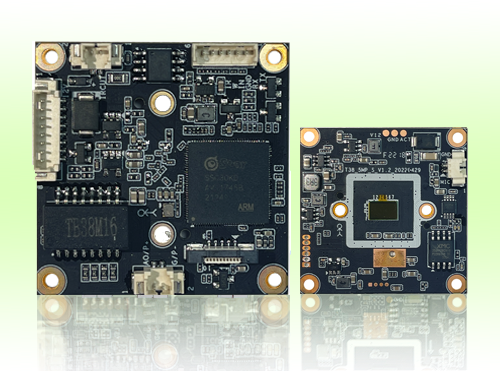 5 MP 38*38mm black light
5 MP 38*38mm black lightTB38M16
-
.png) 2 MP 53*53mm black light WIFI TF card
2 MP 53*53mm black light WIFI TF cardTD53J20
-
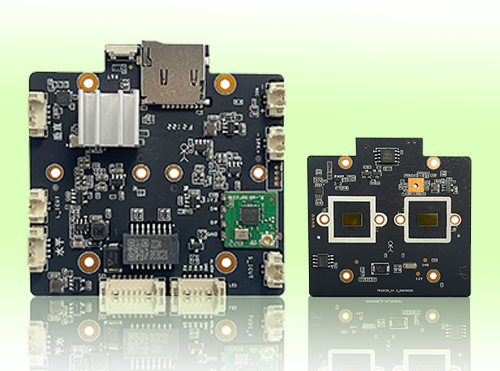 4 MP 53*53mm black light binocular WIFI TF card
4 MP 53*53mm black light binocular WIFI TF cardTD53C20
-
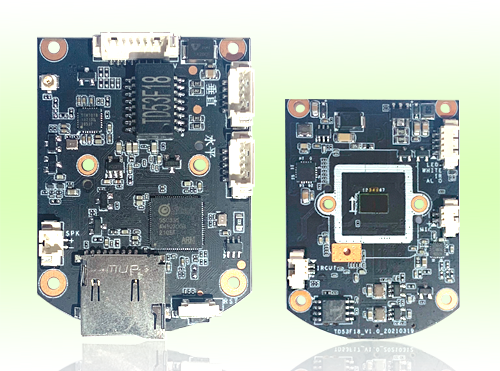 3 MP 53*53mm dual light WIFI TF card
3 MP 53*53mm dual light WIFI TF cardTD53F18
-
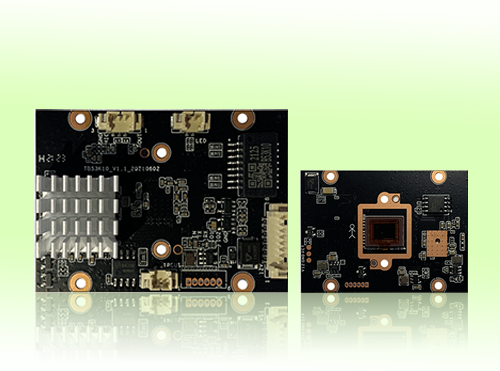 8 MP 42*42mm black light
8 MP 42*42mm black lightTB53K20
-
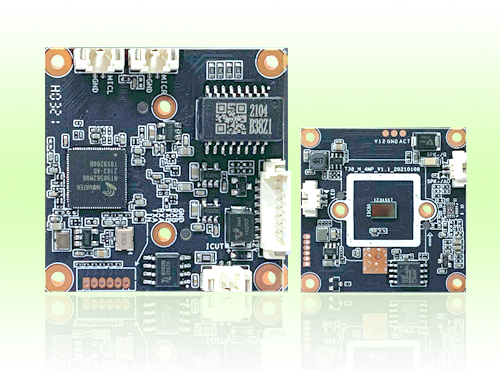 4 MP 38*38mm black light
4 MP 38*38mm black lightTB38Z20
-
 4 MP 38*38mm dual light
4 MP 38*38mm dual lightTR38Y30






